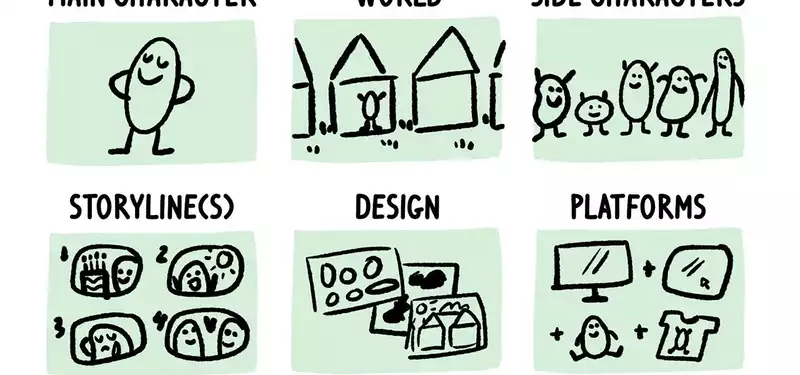Aug 31, 2018
Marketing and How to sell the anime Series: Part 1 (Set up)
You've spent months, possibly even years, developing your idea for a series, but now comes the big moment: you have to convince broadcasters, distributors, and producers about the viability of your idea.
In the international marketplace, pitching your project at a market or co-production forum is often essential to getting a project launched. During my years of attending and pitching at European markets like Cartoon Springboard and Annecy, I've scribbled down many do's and don'ts about how to pitch at these events.
In this multi-part mini-comic that'll run on Cartoon Brew over the next few weeks, I'll be sharing pitching tips and tricks. We begin today with tips on setting up, which will be followed by other sections such as communicating clearly and building trust.
It should be noted that pitching practices vary all over the world, so not every pitch tip will apply to every pitching situation. For example, in the United States, most animated series are not pitched at production forums in the presence of distributors and broadcasters. It is important to do your research beforehand and understand to whom you'll be pitching your project and in what format. While these tips are based on experiences at European markets specifically, you will find that many of the tips will be applicable to other pitching situations as well.
There are many different set-ups possible for your pitch. Figure out what works for you:
Having notes with you can help with jitters. There are several elegant ways to carry notes with you:
There are some basic do's and don'ts for your outfit:
There are some essential elements for a pitch. Here's a basic index to work from:
Don't put much (or any) text on the slides. The audience can not properly listen and read simultaneously.
Using lists/bullet points often takes the soul/rhythm out of your pitch. Don't use them to cram a story into something static.
Use lists/bullet points only to sum up things where appropriate, such as a few episode loglines, a budget, or a character's personality traits – in other words, things that naturally lend themselves to being lists.
The graphic design of your slides should be on point (or at least not horrible). There's no excuses! We're in a visual industry after all.
For more tips, read the rest of the series:




Post your comment